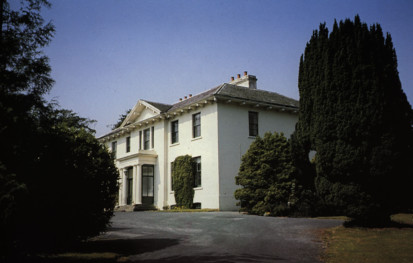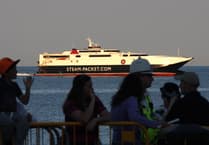We are now part-way through what the Manx Government has promoted as ’2018 Year of Our Island’, and that programme describes how ’we live in a special place; an environment delivering on benefits to our health, our well-being, and our quality of life’ and supports the aim of keeping ’Our Island - a special place to live and work".
Policy and Reform Minister Chris Thomas said: ’2018 will bring opportunities for us to value not only our environment but also our culture, heritage and community, and to remind ourselves how these enhance our quality of life and our health and well-being.’
The island is not alone in this. Recent UK governments have committed to be ’the first generation to leave the environment in a better state than the one we inherited’, saying: ’The (British) Government wants to see development which adds to the overall quality of the area and establishes a strong sense of place to create attractive places to live, work and visit.’
For the island’s long term success in an increasingly hostile international climate, where possible we need to maintain ’our differences that make the difference’ to attract visitors, businesses and residents to a relatively-expensive but highly valued location.
Our built surroundings impact all those four topics identified by Mr Thomas - environment, culture, heritage and community - and also what the UK Government describe as ’a strong sense of place’.
Inappropriate development - be it buildings, structures or hard landscaping - can also seriously harm our natural environment.
Where practical, we should strive to minimise our impact.
Our buildings and structures form part of our overall heritage, which almost all acknowledge is a key component of our future.
In a positive way, these buildings and structures can themselves be of interest, or can provide the setting for, or frame other stories in the landscape.
Equally though, inappropriate developments or street-lit private drives with wide manicured borders slashing through the rural landscape, can be like drawing a moustache on the Mona Lisa.
We absolutely cannot keep everything - but any decision to destroy must be taken in view of its impact and after considering alternatives.
Natural or cultural or built heritage, once destroyed, can hardly ever be re-instated.
If it is destroyed, it is almost certainly more expensive to put things right, than to do the right thing in the first place.
Our Built Heritage
The Examiner’s Buildings at Risk (BAR) series started in May 2016 to highlight the role of our built heritage, and its part in ’keeping our island special’. The articles have covering buildings (and structures) currently at risk and those now lost, and - probably most importantly - show that in some cases it was possible to find sustainable new lives without destroying that which made them important.
The Alliance for Building Conservation (ABC) recognises that the key to a building’s longevity is continued usefulness, and that its life may evolve - hence the emphasis on Sustainable Conservation rather than Preservation.
As was said at a recent Historic England event: ’The solution, when heritage is redundant and at risk, is to save it wherever possible by putting it to new and sympathetic uses - uses which can fund its repair, and also, even more importantly, fund its subsequent maintenance.’
Our built heritage is not just the castles, or the small number of registered buildings, or those in conservation areas - our built heritage spans the whole island and the centuries.
This has been illustrated by the range of buildings and structures our Buildings at Risk articles have covered - from keeills to the Sea Terminal, piers and railways, governor’s residences to the nurses’ home, grand houses to cottages, hotels and cafes, chapels and entertainment venues, farms and industrial sitesâ?¦
Every single one of these buildings and structures has had its own life, sometimes evolving over many chapters - and they have all played, and continue to play, their part in our human lives too.
As an example, farm buildings can show how, in previous generations at least, the life of a building evolved by re-use: farmhouse to farm-worker’s cottage to animal house or store.
It is often the buildings which look the humblest which have the greatest stories to tell.
This makes the point where if it proves impossible to keep, they must be fully recorded before change or destruction.
From the series so far, we have selected a few key sites and topics which illustrate progress over the last two years and some of the problems, the successes and losses.
The images around this article are examples of how some specific sites have faredâ?¦
There are some heartening signs though, and in some areas the situation is possibly not quite so dire as it was when the first BAR article came out two years ago.
Positives, butâ?¦.
We are glad to see that a few of the outstanding registrations have finally come through - but in some cases sadly too late.
We are delighted that the Isle of Man Government has appointed a registered buildings officer - but he is one individual.
And when there was a full-time conservation officer and support team they couldn’t keep up with the work load - not just registered buildings but providing support to all other planning officers when needed and expert guidance to property owners and developers.
We are also glad to see moves by Tynwald to address brownfield sites.
Many churches and chapels, with falling congregations, are definitely in a precarious state.
But thankfully the Isle of Man does not (yet at least) have the ecclesiastical exemption which can circumvent the civil authorities and community input.
Main outstanding issues:
Most important is an improvement in the planning and registration procedures, especially as planning has a very low public trust rating of 41% in the government’s own survey.
This week sees a statement to Tynwald following the consultation document circulated at the end of last year.
In this respect, a clearer, cleaner approach to consultation is required where matters raised can be properly and fully answered.
â?¢ Planning needs to be de-politicised as per Tynwald select committee, and planning inspectors (who expertly apply approved policies) should only be over-ruled on strategic national grounds, not political whim or expediency.
There needs to be an efficient enforcement policy and practice with regard to planning and the removal of eyesores (’grot spots’).
â?¢ Registration - hopefully now being expedited.
The decision to actually register needs to be outwith executive government and controlled by a quite separate body to planning.
Most of all, transparency is needed and seems to be being promised.
The Lorne House debacle clearly showed many shortcomings and the efforts of the late Mark Moroney and others meant that a potential disaster was avoided.
Registered status doesn’t necessarily ’prevent’, it merely means that consideration is required.
â?¢ Demolition - one particular concern is the completely un-controlled nature of demolition in many circumstances on the island, a subject where the island lags behind other nearby, more enlightened, jurisdictions.
With lack of knowledge and appreciation, drip by drip destruction leads to ’there’s still plenty examples of â?¦. left’ / ’oops, didn’t realise, that was the last one’.
Also, the long-standing the practice for planners to force demolition of perfectly good buildings as a condition of allowing a new one needs to stop - not only to prevent loss of vernacular buildings, but also it can mean that a more suitable and probably less intrusive site is used which could provide a greater opportunity for high-quality new design.
â?¢ Support - there should be encouragement for buildings to be sustainably conserved, including changes to the current tax structure.
Support does not necessarily need to be in the form of grants - at its simplest it may be just encouragement and expert advice. However, there does need to be a properly funded system of grants for the most important buildings which are unable, of themselves, to raise adequate funding to provide for their survival.
Everyone’s responsibility
Buildings and structures tell stories.
Instead of book burning, we can sometimes help add a new chapter that will be appreciated by future generations, but wilful destruction can never be forgiven.
These are not just Manx problems - but the Manx Government has unfortunately lagged behind best practice from neighbouring jurisdictions.
We are all responsible. Care for our environment - whether natural or built - cannot and should not all be done by Government. Government can, and should, provide the framework and the lead, but it has to be a co-operative effort.
How we treat our environment affects us all, and we all have to play our part in caring for it.




.jpeg?width=209&height=140&crop=209:145,smart&quality=75)
Comments
This article has no comments yet. Be the first to leave a comment.